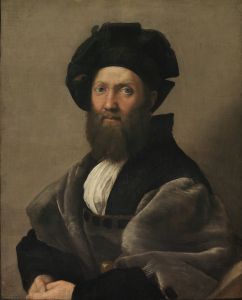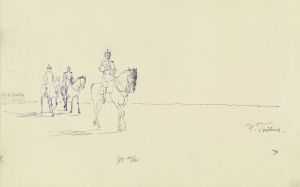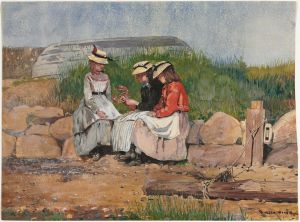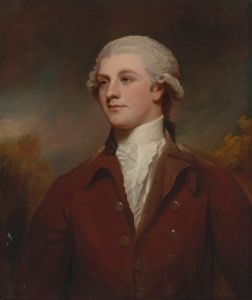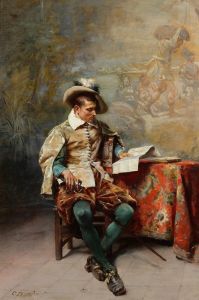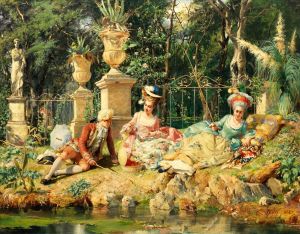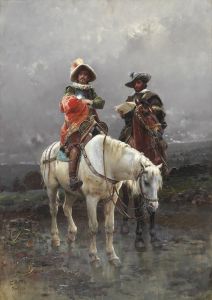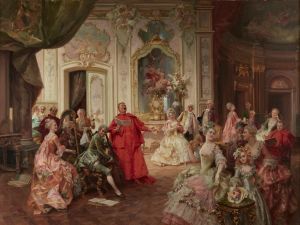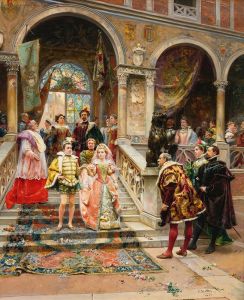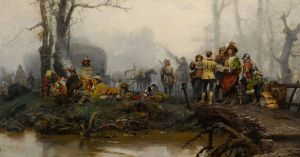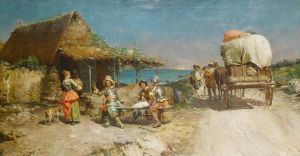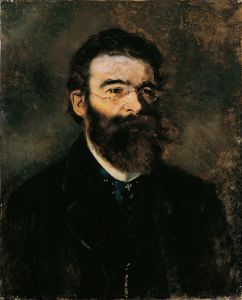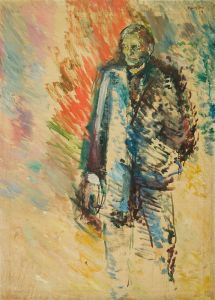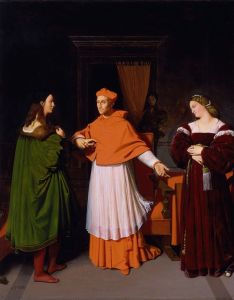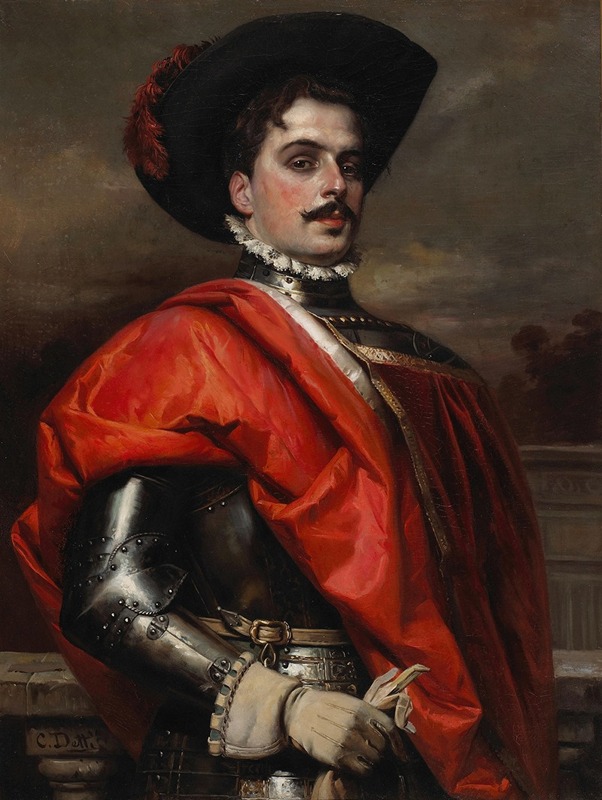
The proud cavalier
A hand-painted replica of Cesare Auguste Detti’s masterpiece The proud cavalier, meticulously crafted by professional artists to capture the true essence of the original. Each piece is created with museum-quality canvas and rare mineral pigments, carefully painted by experienced artists with delicate brushstrokes and rich, layered colors to perfectly recreate the texture of the original artwork. Unlike machine-printed reproductions, this hand-painted version brings the painting to life, infused with the artist’s emotions and skill in every stroke. Whether for personal collection or home decoration, it instantly elevates the artistic atmosphere of any space.
Cesare Auguste Detti was an Italian painter known for his historical and genre scenes, often depicting romanticized views of the past. One of his notable works is "The Proud Cavalier," which exemplifies his skill in capturing the elegance and drama of historical subjects.
"The Proud Cavalier" is a painting that showcases Detti's fascination with the 17th-century cavalier culture. Cavaliers were known for their flamboyant clothing, chivalric values, and loyalty to the monarchy, particularly during the English Civil War. Although Detti was Italian, his work often reflected a broader European interest in historical themes, and "The Proud Cavalier" is no exception.
In this painting, Detti employs a rich color palette and meticulous attention to detail, which are characteristic of his style. The cavalier is depicted in elaborate attire, complete with a plumed hat, lace collar, and a richly embroidered doublet. This attention to costume detail not only highlights the fashion of the era but also serves to emphasize the cavalier's status and pride. The figure's posture and expression convey a sense of confidence and nobility, aligning with the romanticized view of cavaliers as gallant and honorable figures.
Detti's technique in "The Proud Cavalier" reflects his academic training and his ability to blend realism with a touch of theatricality. The use of light and shadow in the painting adds depth and dimension, drawing the viewer's eye to the cavalier's face and attire. The background, while less detailed, provides a suitable context that suggests a setting of historical significance, perhaps a grand hall or a courtly environment.
The painting is a testament to Detti's ability to evoke a sense of nostalgia for a bygone era. His work often appealed to the tastes of the late 19th and early 20th-century art collectors who were fascinated by historical romanticism. "The Proud Cavalier" fits well within this context, as it captures the imagination and transports the viewer to a time of chivalry and elegance.
Cesare Auguste Detti was part of a broader movement of artists who looked to the past for inspiration, creating works that were both educational and entertaining. His paintings, including "The Proud Cavalier," are appreciated for their ability to bring history to life through vivid imagery and attention to detail. While Detti may not be as widely known today as some of his contemporaries, his work remains a valuable part of the genre painting tradition, offering insights into the cultural and artistic values of his time.
In summary, "The Proud Cavalier" by Cesare Auguste Detti is a fine example of historical genre painting that captures the essence of 17th-century cavalier culture. Through his skilled use of color, detail, and composition, Detti creates a work that is both visually striking and evocative of a romanticized past.





